Orith Toledo-Ronen
Conversational Prompt Engineering
Aug 08, 2024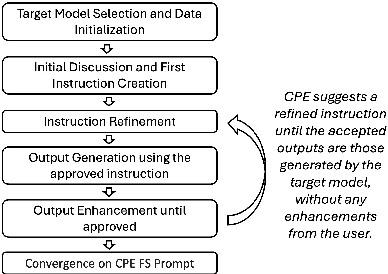
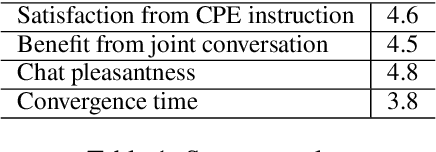
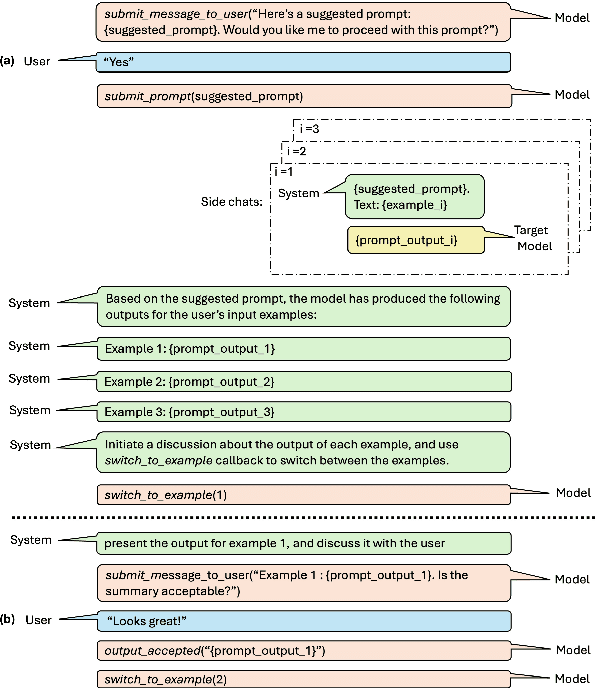
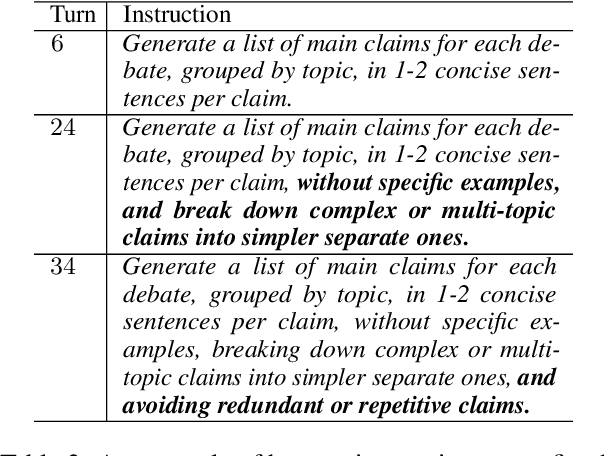
Abstract:Prompts are how humans communicate with LLMs. Informative prompts are essential for guiding LLMs to produce the desired output. However, prompt engineering is often tedious and time-consuming, requiring significant expertise, limiting its widespread use. We propose Conversational Prompt Engineering (CPE), a user-friendly tool that helps users create personalized prompts for their specific tasks. CPE uses a chat model to briefly interact with users, helping them articulate their output preferences and integrating these into the prompt. The process includes two main stages: first, the model uses user-provided unlabeled data to generate data-driven questions and utilize user responses to shape the initial instruction. Then, the model shares the outputs generated by the instruction and uses user feedback to further refine the instruction and the outputs. The final result is a few-shot prompt, where the outputs approved by the user serve as few-shot examples. A user study on summarization tasks demonstrates the value of CPE in creating personalized, high-performing prompts. The results suggest that the zero-shot prompt obtained is comparable to its - much longer - few-shot counterpart, indicating significant savings in scenarios involving repetitive tasks with large text volumes.
Stay Tuned: An Empirical Study of the Impact of Hyperparameters on LLM Tuning in Real-World Applications
Jul 25, 2024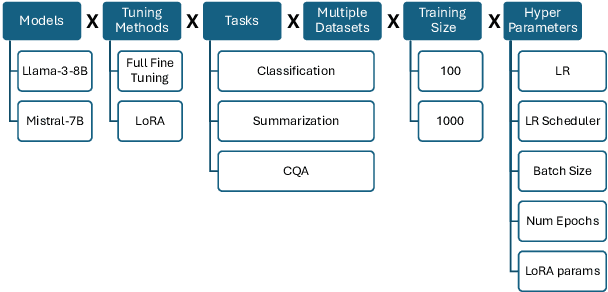


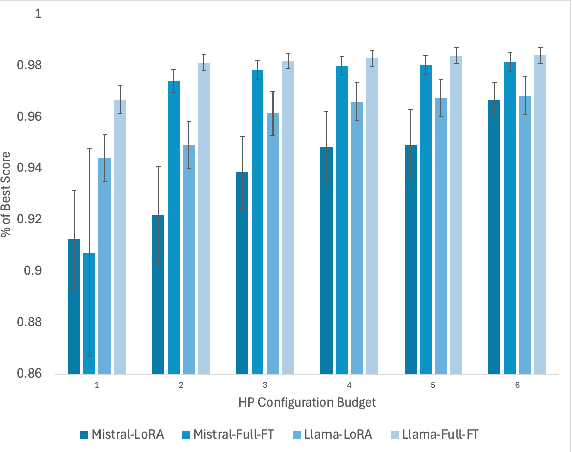
Abstract:Fine-tuning Large Language Models (LLMs) is an effective method to enhance their performance on downstream tasks. However, choosing the appropriate setting of tuning hyperparameters (HPs) is a labor-intensive and computationally expensive process. Here, we provide recommended HP configurations for practical use-cases that represent a better starting point for practitioners, when considering two SOTA LLMs and two commonly used tuning methods. We describe Coverage-based Search (CBS), a process for ranking HP configurations based on an offline extensive grid search, such that the top ranked configurations collectively provide a practical robust recommendation for a wide range of datasets and domains. We focus our experiments on Llama-3-8B and Mistral-7B, as well as full fine-tuning and LoRa, conducting a total of > 10,000 tuning experiments. Our results suggest that, in general, Llama-3-8B and LoRA should be preferred, when possible. Moreover, we show that for both models and tuning methods, exploring only a few HP configurations, as recommended by our analysis, can provide excellent results in practice, making this work a valuable resource for practitioners.
Multi-Domain Targeted Sentiment Analysis
May 08, 2022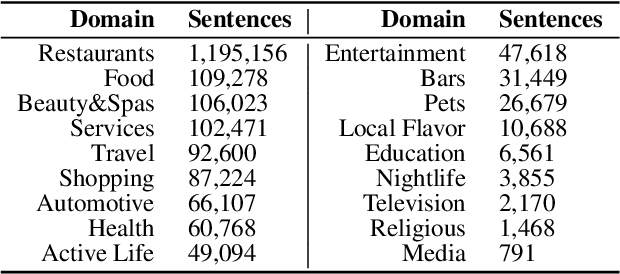

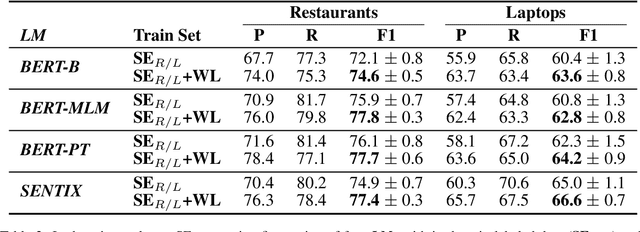
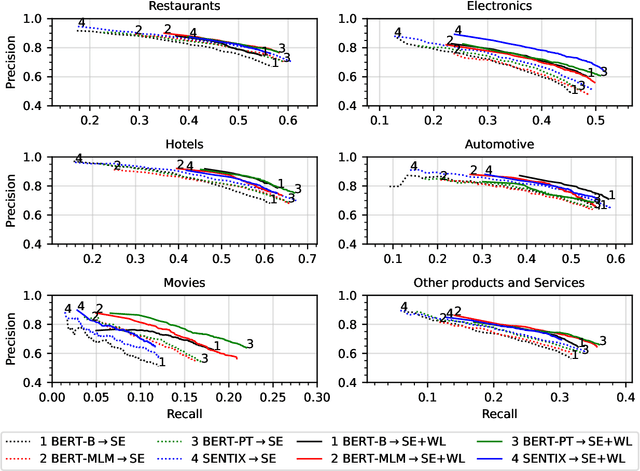
Abstract:Targeted Sentiment Analysis (TSA) is a central task for generating insights from consumer reviews. Such content is extremely diverse, with sites like Amazon or Yelp containing reviews on products and businesses from many different domains. A real-world TSA system should gracefully handle that diversity. This can be achieved by a multi-domain model -- one that is robust to the domain of the analyzed texts, and performs well on various domains. To address this scenario, we present a multi-domain TSA system based on augmenting a given training set with diverse weak labels from assorted domains. These are obtained through self-training on the Yelp reviews corpus. Extensive experiments with our approach on three evaluation datasets across different domains demonstrate the effectiveness of our solution. We further analyze how restrictions imposed on the available labeled data affect the performance, and compare the proposed method to the costly alternative of manually gathering diverse TSA labeled data. Our results and analysis show that our approach is a promising step towards a practical domain-robust TSA system.
YASO: A New Benchmark for Targeted Sentiment Analysis
Dec 29, 2020


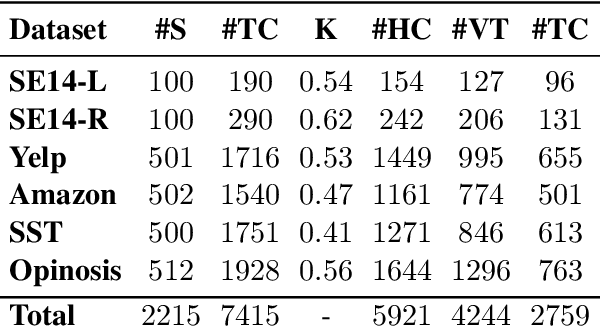
Abstract:Sentiment analysis research has shifted over the years from the analysis of full documents or single sentences to a finer-level of detail -- identifying the sentiment towards single words or phrases -- with the task of Targeted Sentiment Analysis (TSA). While this problem is attracting a plethora of works focusing on algorithmic aspects, they are typically evaluated on a selection from a handful of datasets, and little effort, if any, is dedicated to the expansion of the available evaluation data. In this work, we present YASO -- a new crowd-sourced TSA evaluation dataset, collected using a new annotation scheme for labeling targets and their sentiments. The dataset contains 2,215 English sentences from movie, business and product reviews, and 7,415 terms and their corresponding sentiments annotated within these sentences. Our analysis verifies the reliability of our annotations, and explores the characteristics of the collected data. Lastly, benchmark results using five contemporary TSA systems lay the foundation for future work, and show there is ample room for improvement on this challenging new dataset.
Multilingual Argument Mining: Datasets and Analysis
Oct 13, 2020


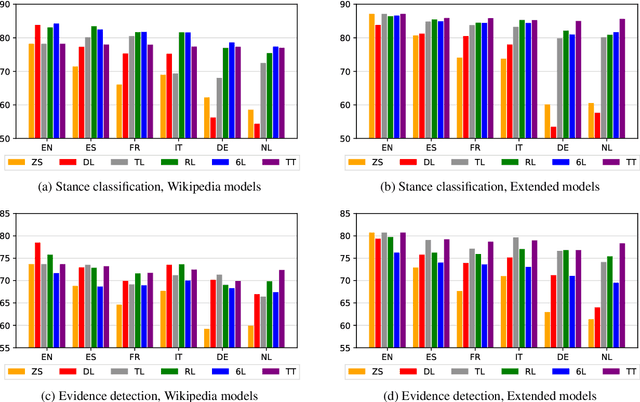
Abstract:The growing interest in argument mining and computational argumentation brings with it a plethora of Natural Language Understanding (NLU) tasks and corresponding datasets. However, as with many other NLU tasks, the dominant language is English, with resources in other languages being few and far between. In this work, we explore the potential of transfer learning using the multilingual BERT model to address argument mining tasks in non-English languages, based on English datasets and the use of machine translation. We show that such methods are well suited for classifying the stance of arguments and detecting evidence, but less so for assessing the quality of arguments, presumably because quality is harder to preserve under translation. In addition, focusing on the translate-train approach, we show how the choice of languages for translation, and the relations among them, affect the accuracy of the resultant model. Finally, to facilitate evaluation of transfer learning on argument mining tasks, we provide a human-generated dataset with more than 10k arguments in multiple languages, as well as machine translation of the English datasets.
Financial Event Extraction Using Wikipedia-Based Weak Supervision
Nov 25, 2019



Abstract:Extraction of financial and economic events from text has previously been done mostly using rule-based methods, with more recent works employing machine learning techniques. This work is in line with this latter approach, leveraging relevant Wikipedia sections to extract weak labels for sentences describing economic events. Whereas previous weakly supervised approaches required a knowledge-base of such events, or corresponding financial figures, our approach requires no such additional data, and can be employed to extract economic events related to companies which are not even mentioned in the training data.
 Add to Chrome
Add to Chrome Add to Firefox
Add to Firefox Add to Edge
Add to Edge